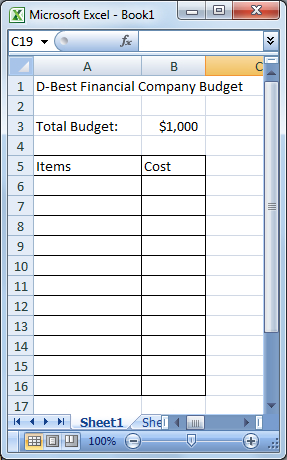Similar to the repetition analysis shown earlier in this chapter, visual representation is important to making decisions. However, having the data along with a representation allows for a more complete view of the information, and allows for a more complete decision.
In this recipe, you will learn how to add mini-graph elements to your data to enhance analysis. Although this recipe will utilize a graph element from Excel, the graph is provided in-line to the text, which qualifies this as a non-standard visual element.
Begin with the data you wish to interpret. In this recipe, we will use a budget sheet for D-Best Financial:
1. Lay out your Excel chart as shown in the following screenshot:

3. From the Home tab on the Excel ribbon, choose Conditional Formatting | New Rule:

4. From the New Formatting Rule window, choose the Format all cells based on their values rule:

5. From the Format Style dropdown, choose Data Bar, select...



